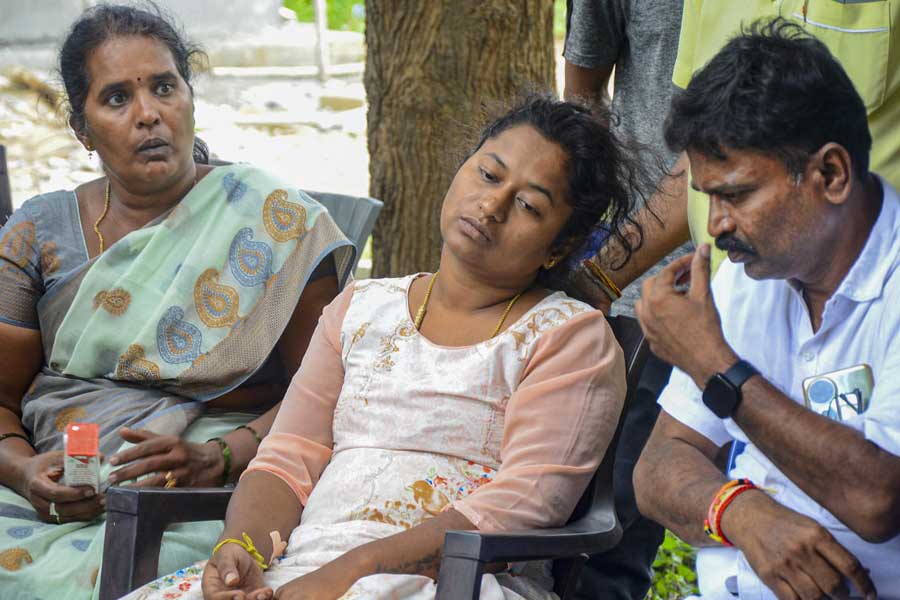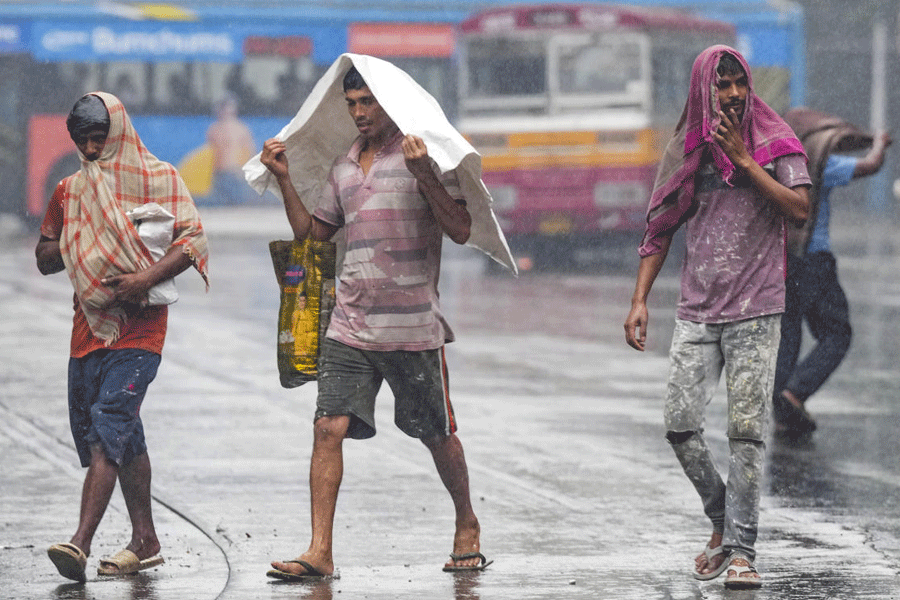 |
| Himsagar displayed at a city shop. Picture by Sanat Kumar Sinha |
Buyers from Singapore, Malaysia, Qatar and Sri Lanka and farmers from various districts of Bengal as well as experts turned up at Mango Mahotsava 2009, held from June12 to 14.
The meet, organised by the Indian Chamber of Commerce and the Agri Horticultural Society of India with support from the Centre and the state government, was aimed at boosting mango cultivation in Bengal and export of the produce.
“We have 30 varieties of the fruit and revived Kahitur, a rare variety not available in large quantities. Around five quintals have been exported this year to Dubai but we need an integrated chain to strengthen foreign trade,” said Washed Ali, a grower from Murshidabad.
Mujibar Rahman, from Malda, said: “Storage is a problem. Besides, most traders prefer naturally matured mangoes but the growers here are so poor they are forced to pluck them in advance.” Rahman, too, pleaded for government support to boost trade.
Here’s a summary of what experts and traders want growers to do to make Himsagar and Lakshmanbhog — the Bengal varieties identified for export —market-ready, and the corresponding ground reality.
EXPERTS WANT: A better harvest management technology and awareness. “Growers should know how to pluck the fruits, and store, grade, sort and pack them properly for export,” said M.P. Vijay, the regional manager of the Agricultural and Processed Food Products Export Development Authority.
GROUND REALITY: “Awareness is spreading but as of now only 10 per cent of the farmers are following a planned harvest technique,” said Samarendra Nath Khara, the mango development officer of Malda.
Elaborating on the technique, Khara said: “The fruit is plucked keeping a part of the stem intact. The stem is then cut and the fruit is kept upside down for 20-30 minutes for the sap to drain out. If this is not done sap leaves blemishes on the skin of the fruit. Once the sap clears out, the mangoes are dipped in hot water mixed with chlorine or some other pesticide. They are then washed in cold water, brushed, blow dried and graded according to size or weight before being packed.”
EXPERTS WANT: Bengal has no variety suitable for processing. “Fajli is sometimes used for processing but thanks to its high water content, it makes for a better table variety,” Vijay said.
GROUND REALITY: Bengal has a variety called Aswina which is good for chutney and achar. “Last year, around 14,000 metric tonnes of Aswina had gone to South for processing. Gopalbhog is good for aamsatta,” said Khara.
EXPERTS WANT: Himsagar has the potential for export. But it is thin-skinned and sweet and rots easily. If the variety is to be exported, the fruits have to be picked a fortnight before they ripen.
GROUND REALITY: Since Himsagar growers now target mostly the domestic market, they pick the fruits two-three days before maturity. “If there is a demand from the international market, the growers will change the schedule accordingly,” said Khara.
EXPERTS WANT: Pakdinadan, a buyer from Malaysia who mostly buys Baigan Balli mangoes from South, said he preferred organic fruits. He did not elaborate whether the Bengal varieties failed to match his standards but an expert pointed out that the traces of chemicals in the fruits grown in the state are higher than those of Maharashtra. Pakdinadan also stressed the need for proper packaging.
GROUND REALITY: Producing pure organic products is expensive. “It costs about Rs 5-7 more per kg. Farmers had tried it and but were forced to sell cheap. So they have gone back to using chemicals. But the farmers will change their technique and start producing organic fruits again if exporters sign a contract with them and spell out their requirements,” said Khara.
EXPERTS WANT: Sreeram Chellappa, the chief executive officer of Keventer Fresh, suggested an integrated buyer-seller chain. Farmers need to work together to ensure enough yield for export and uniform quality, he said.
GROUND REALITY: The government has formed a mango growers’ society which can interact with buyers.
EXPERTS WANT: R.T. Gujrate, of the Reliance orchard in Jamnagar, said Bengal has too many varieties. “Growers should concentrate on one or two for export.”
GROUND REALITY: “We have prioritised the varieties. Lakshmanbhog, Himsagar, Langra and Fajli have been selected for export. If buyers contact the growers during the flowering stage, all their requirements can be satisfied, said Khara.
EXPERTS WANT: Proper nutrition and pest management are required.
GROUND REALITY: About 50 per cent of the farmers are ensuring proper nutrition and pest management techniques.










